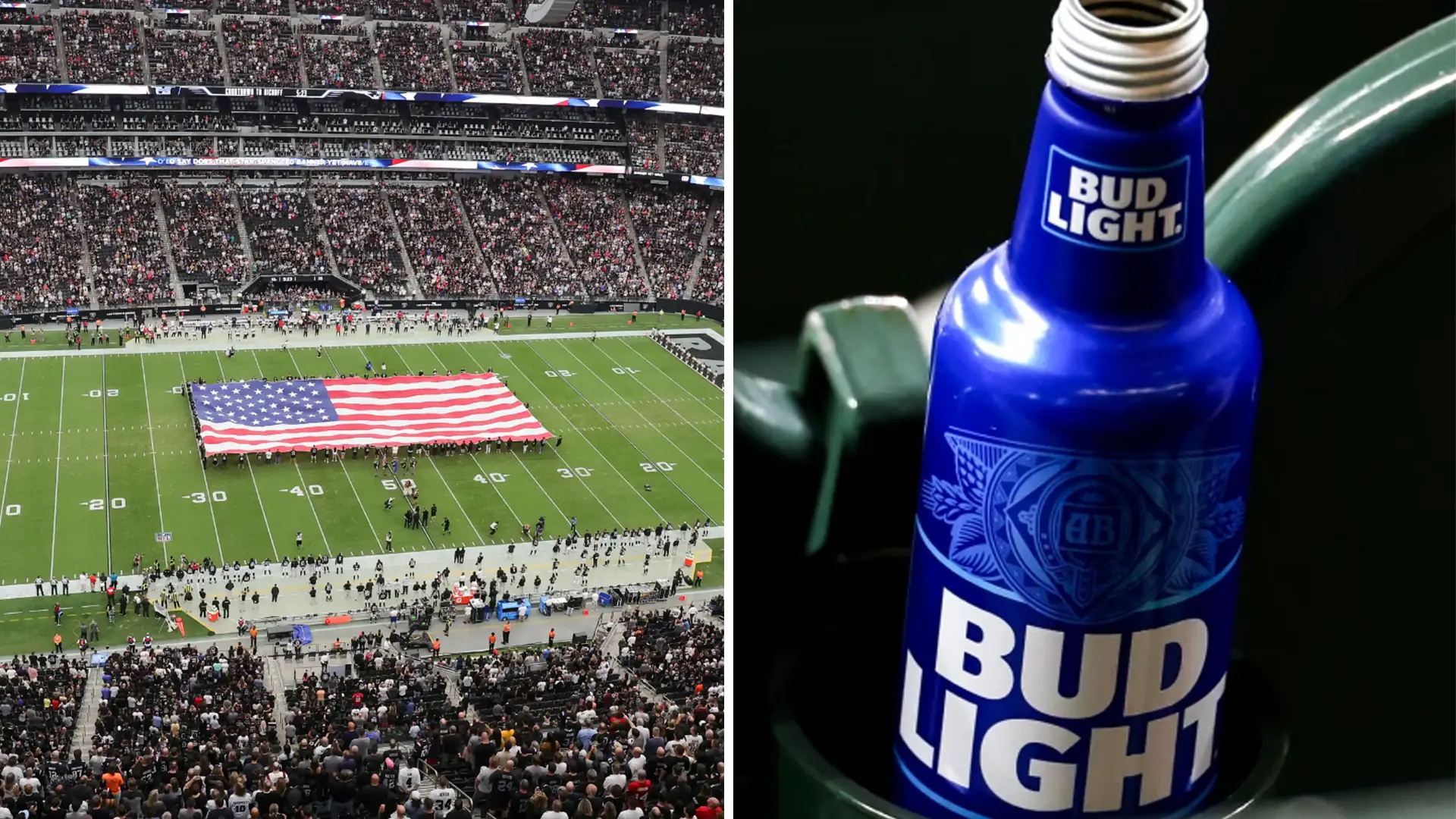In an unprecedented move that has sent ripples through the sports, entertainment, and beverage industries, Bud Light—the beer synonymous with American sports, especially the Super Bowl—has been conspicuously absent from the lineup of Super Bowl LVIII. This development has left fans, advertisers, and market analysts bewildered and speculating on the reasons behind this significant exclusion.
For decades, Bud Light has been a staple of Super Bowl festivities, not just as a preferred beverage choice for millions watching the game but also through its iconic commercials that have become as much a part of Super Bowl culture as the halftime show and the game itself. From humorous ads that capture the zeitgeist to heartfelt messages that resonate with a broad audience, Bud Light’s marketing strategies have consistently nailed the art of Super Bowl advertising. Yet, in 2024, there was not a single Bud Light can to be seen, neither in the hands of game-goers nor within the flashy, multimillion-dollar ad breaks.
The absence of Bud Light from the Super Bowl festivities has led to widespread speculation. Some wonder if this is a strategic repositioning by Anheuser-Busch, Bud Light’s parent company, in response to evolving market trends and consumer preferences. Others theorize that it could be the fallout from previous controversies, such as the backlash against certain marketing campaigns or partnerships that may not have landed as intended with all segments of Bud Light’s diverse consumer base.
One prominent theory ties back to Anheuser-Busch’s recent forays into more socially conscious advertising and partnerships. The company’s attempt to engage with wider social issues and support for diverse causes has been met with mixed reactions from the public. While many consumers have praised the brand for its progressive stance, others have called for boycotts, citing various grievances. This polarized response could have prompted a strategic withdrawal from high-visibility events like the Super Bowl to avoid further controversy or backlash.
Economic considerations cannot be overlooked in this scenario. The cost of Super Bowl advertising has skyrocketed, with 30-second spots costing millions of dollars. For Anheuser-Busch, the decision to not participate in Super Bowl advertising could be a calculated move to allocate marketing resources more efficiently across different platforms and initiatives that offer a better return on investment. In an era where digital marketing can provide targeted reach and measurable outcomes, traditional TV ads, even during the Super Bowl, might not offer the same bang for the buck as in the past.
Moreover, the beverage industry is undergoing significant changes, with a noticeable shift towards health-conscious products, craft beers, and non-alcoholic options. Bud Light’s absence from the Super Bowl could signal a broader strategic realignment within Anheuser-Busch to adapt to these changing consumer preferences and explore new market opportunities beyond traditional beer offerings.
Bud Light’s absence was felt not just in the commercial breaks but also in the broader cultural experience of the Super Bowl. The brand’s iconic commercials are often a topic of discussion alongside the game’s highlights, and their absence left a void that other advertisers were keen to fill. This shift provided an opportunity for emerging brands and products to step into the spotlight, potentially reshaping the advertising landscape of future Super Bowls.
From a consumer perspective, the absence of Bud Light adverts may have altered the traditional Super Bowl viewing experience. However, it also highlighted the changing nature of the event itself—a platform not just for football but for a broader cultural and social dialogue, reflected in the commercials that vie for viewers’ attention during the game.
The decision by Anheuser-Busch to not feature Bud Light in Super Bowl LVIII is a significant moment in the history of Super Bowl advertising. It underscores the evolving relationship between brands and their audiences, the shifting dynamics of social discourse, and the need for companies to navigate complex cultural landscapes thoughtfully.
As we look to the future, the implications of this move will likely influence not only Anheuser-Busch’s marketing strategies but also those of other major brands considering the value and impact of Super Bowl advertising. It raises important questions about the role of traditional advertising in a rapidly changing digital world and the ways in which brands can engage with diverse and sometimes divided audiences.
In conclusion, while Bud Light’s absence from Super Bowl LVIII may have surprised many, it also opens up a conversation about the future of advertising, the role of major brands in social issues, and the evolving tastes and preferences of consumers. As the dust settles, it will be fascinating to see how Anheuser-Busch and other industry giants adapt and innovate in response to these challenges and opportunities.

